Note: Our trip to Greece is so breathtaking that we needed to split it into four-and-a-half blog posts to cover it all. This is part two. You can skip ahead to parts three, four, and the epilogue, if you'd like, or you can go back to part one. But take your time--it's really beautiful!
Warning: This is a ridiculously long post. It's mostly pictures, though. Pictures I could not resist posting!
I have dreamed of visiting Greece since I was 11 years old, when I wrote a report on the country. You'd think that after nearly 15 years' worth of anticipation the reality could not help but be a letdown, but you'd be wrong.
You are not going to believe these pictures.
That is what I said to Tyler when I got back from my day trip to Chania, and it applies to you, dear reader, as well. Chania (also spelled Hania or Xania) is located near the western tip of Crete. Its Venetian harbor and many, many Venetian mansions are beautifully preserved. (Crete was part of the Venetian empire from the 13th to the 17th century. It also belonged to the Roman, Byzantine, and Ottoman empires at various points in its history.)
The three-hour bus ride from Heraklion to Chania was nearly worthwhile for the scenery along the way alone.
Warning: This is a ridiculously long post. It's mostly pictures, though. Pictures I could not resist posting!
I have dreamed of visiting Greece since I was 11 years old, when I wrote a report on the country. You'd think that after nearly 15 years' worth of anticipation the reality could not help but be a letdown, but you'd be wrong.
You are not going to believe these pictures.
That is what I said to Tyler when I got back from my day trip to Chania, and it applies to you, dear reader, as well. Chania (also spelled Hania or Xania) is located near the western tip of Crete. Its Venetian harbor and many, many Venetian mansions are beautifully preserved. (Crete was part of the Venetian empire from the 13th to the 17th century. It also belonged to the Roman, Byzantine, and Ottoman empires at various points in its history.)
The three-hour bus ride from Heraklion to Chania was nearly worthwhile for the scenery along the way alone.
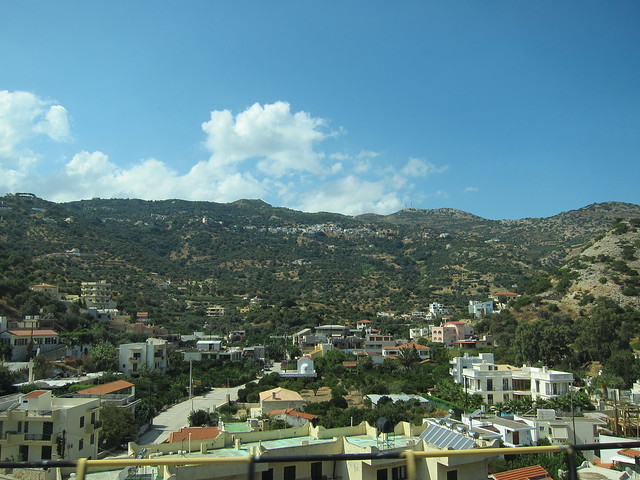
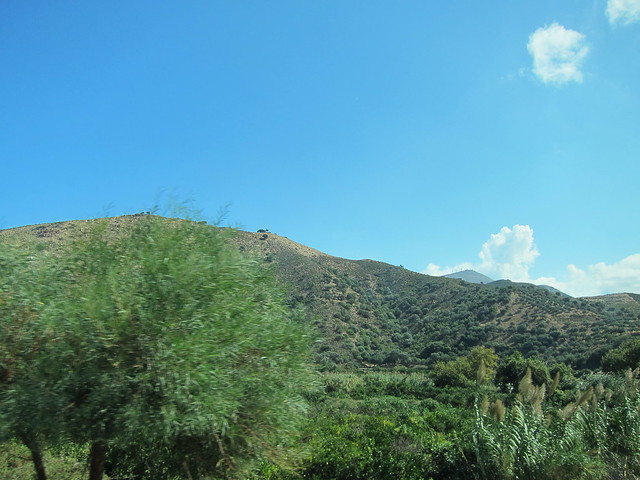
From the Chania bus station I headed toward the old town, where I spent some time wending my way through narrow, shop-lined streets, as my guide book recommended. It was cute, but by no means breathtaking. I started to feel a little annoyed--I'd taken a long and expensive bus ride, I was getting hungry, and I couldn't afford to buy any of the nice things all around me. Then I saw this:
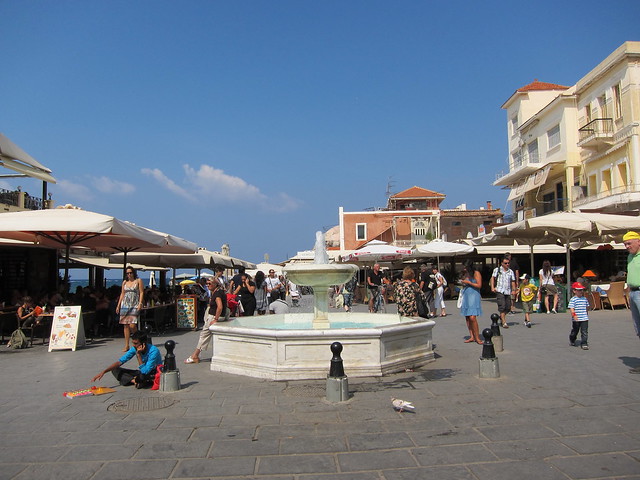
When I could finally tear my eyes away from the fountain, I walked forward a couple of meters and lost my heart to Chania forever. I know that sounds melodramatic, but it's kind of true.
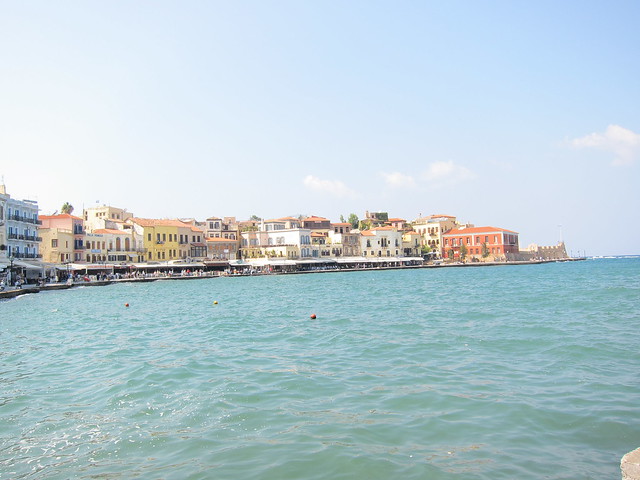
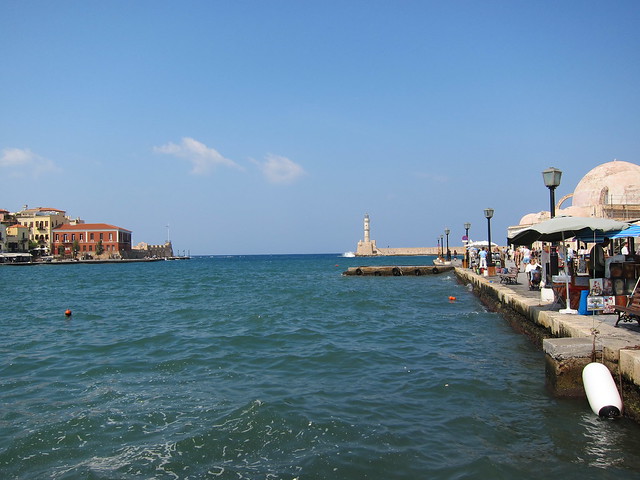
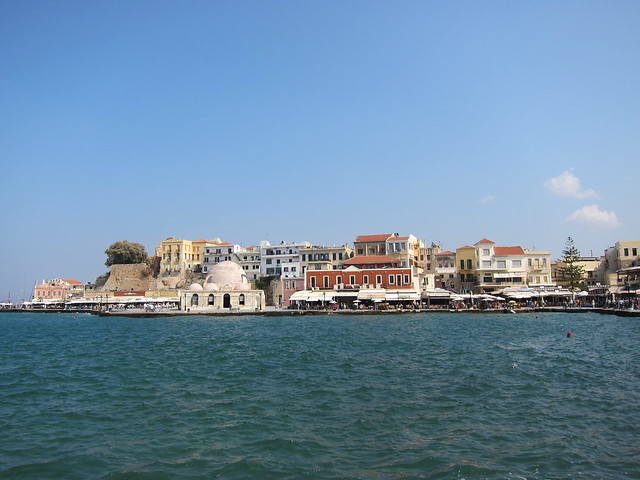
Walking along the sea wall, I thought the colors of the water would make me cry.
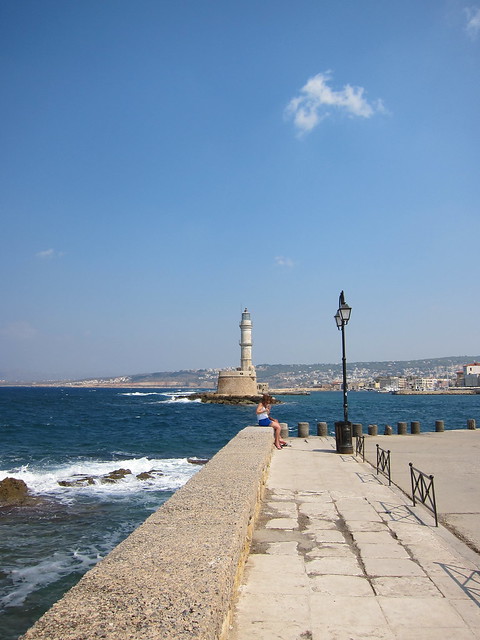
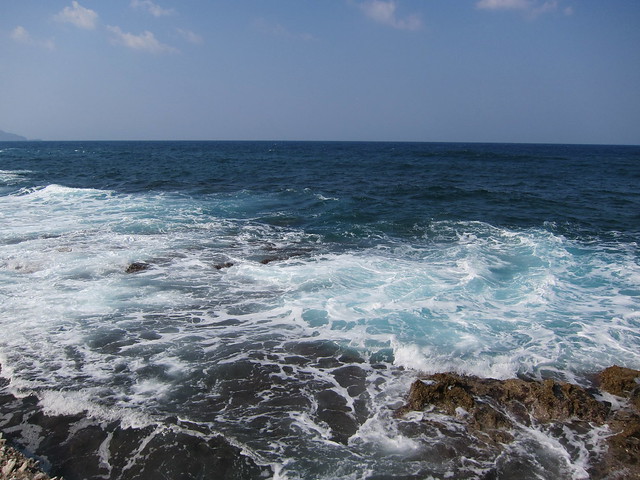
I cut back through the neighborhood behind the harbor, where I found more elegant mansions and extremely fancy shops. The crafts were so impressive that I hardly even minded just looking.
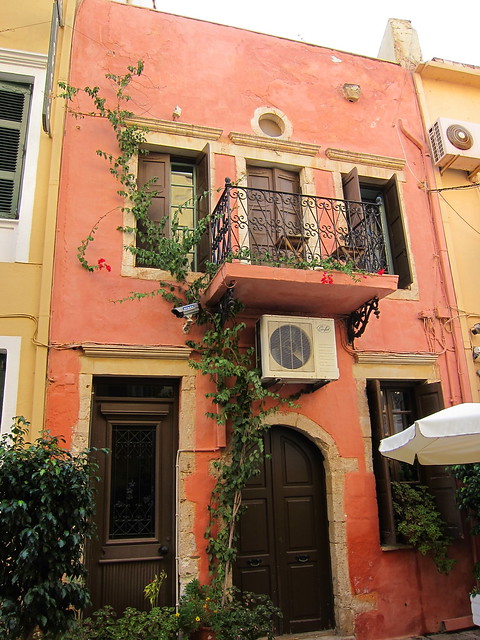
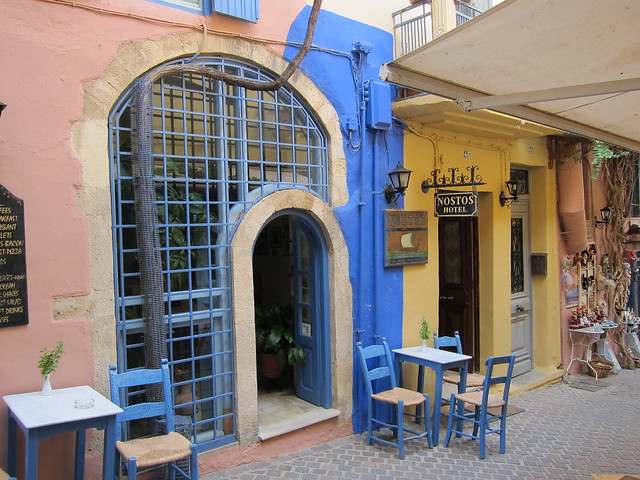
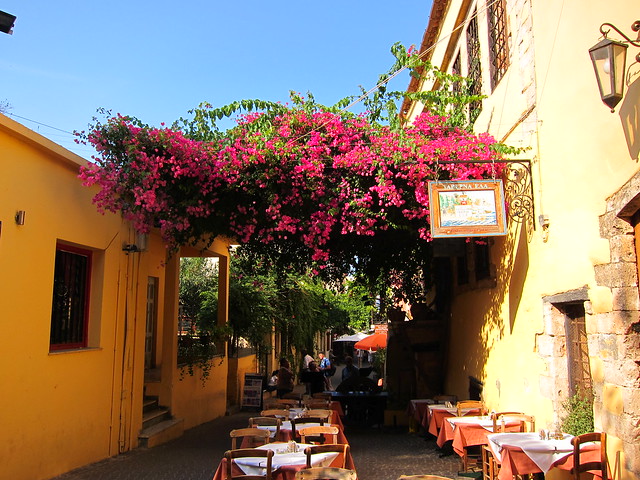
Just a couple more pictures, and then I'll move on. (There are way more pictures on Flickr, too.) I don't have much more to say about Chania (I'm having enough trouble being articulate about it as it is), except go there.
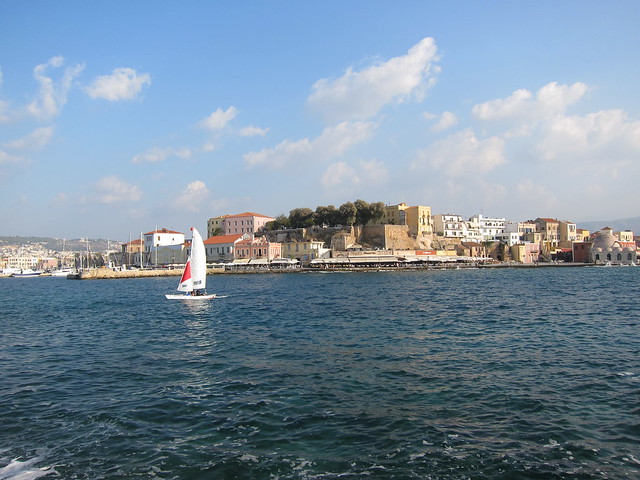

On Saturday Tyler and I finally got to do some sight-seeing together. We went on an excursion arranged by the conference that was our excuse for going to Crete. We saw the ruins of the Minoan palace at Malia and a Byzantine church with frescoes completely covering the ceilings and walls, but the highlight was without question the Venetian fortress-island of Spinalonga.
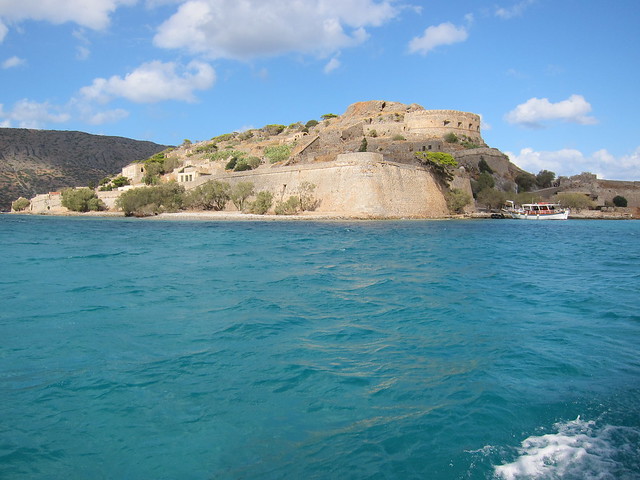
The fortress has never been taken by force. The Venetians stayed holed up in there for a good 50 years after the Turks had conquered the rest of the island. The Turks finally had to buy it from the Venetians to get them to leave. Crete won its independence from the Ottoman Empire in the late 19th century, but couldn't get the Turks out of Spinalonga until they threatened to send lepers to the island. Eventually Spinalonga did become a leper colony, and remained one until 1957.
By this time we were pretty sick of our long-winded tour guide, so we ditched the group early and just climbed. Tyler described the island as "a cross between Rock City and Venice." (Rock City is an area of rock formations and wind caves in Mount Diablo State Park.) This is one of the great things about (most) archaeological sites on Crete--you can clamber all over them.
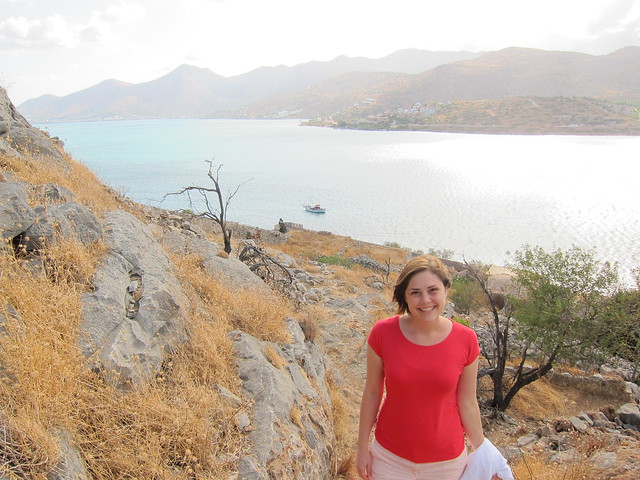
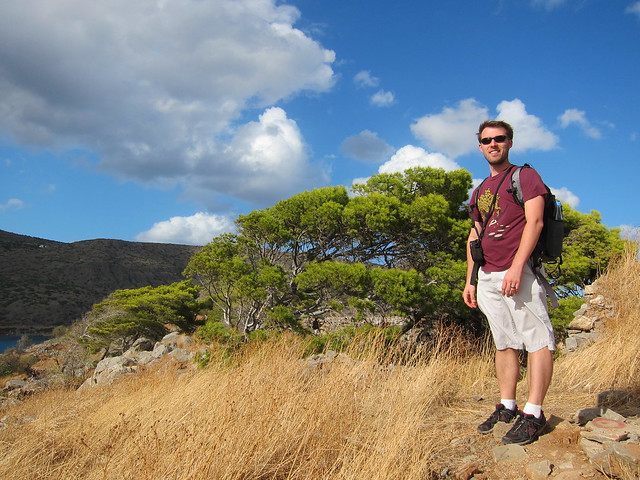
The water around Spinalonga was the most beautiful I have ever seen.
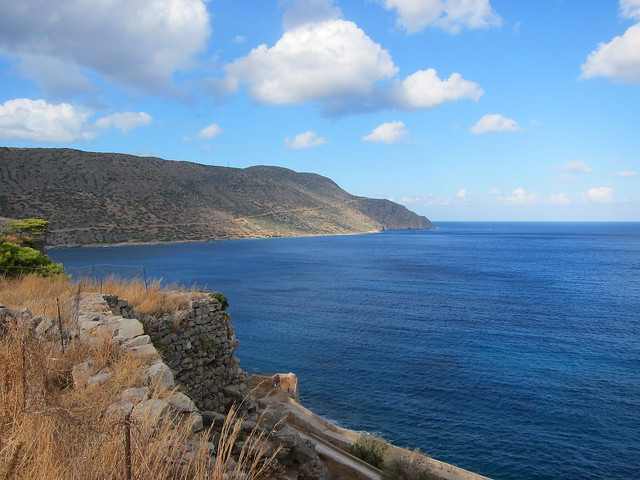

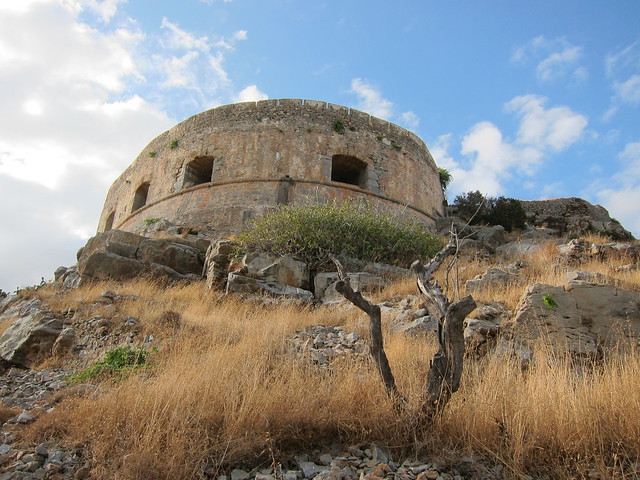
It was a very happy day.
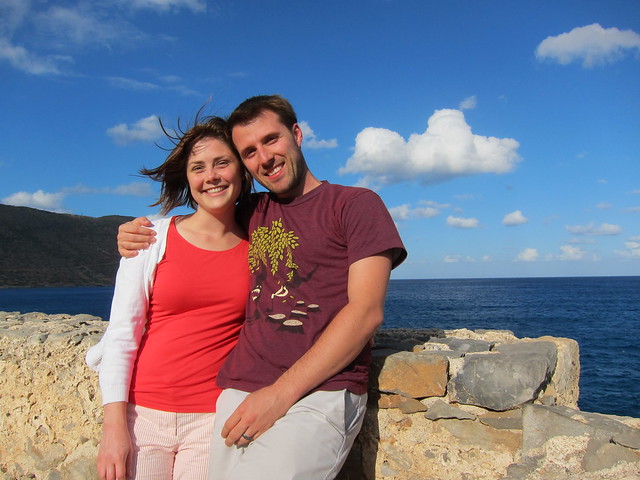
On Sunday Tyler and I spent another lovely day together in Agios Nikolaos, the smallest of Crete's major cities, near its eastern end. Ag Nik, as we like to call it, is located on the Gulf of Mirabello, which means, appropriately, "beautiful view." It has a very deep lake--about 70 meters!--in the middle of the old town, right next to the harbor.
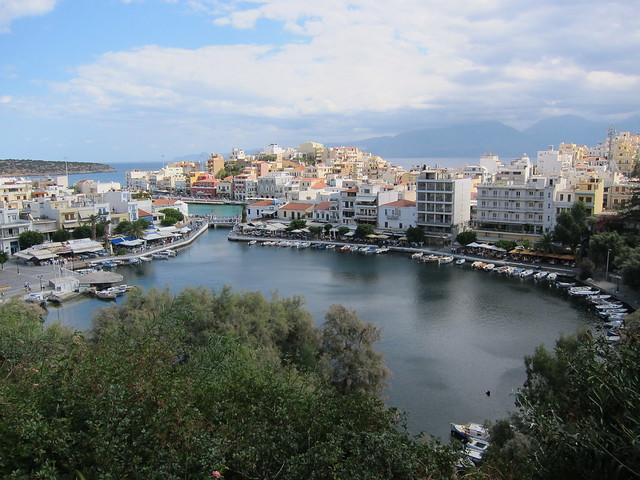

Ag Nik also has some great beaches right in town. This is where we swam in the Mediterranean for the first time!
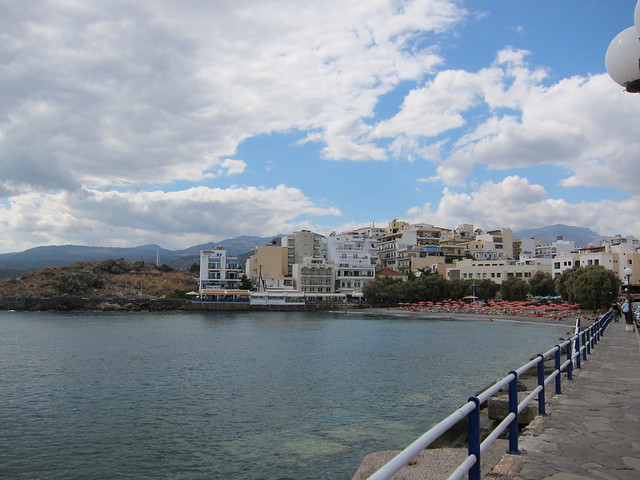
The ground dropped away extremely quickly, so there was no messing around with wading at this beach. If you were going to get in, you got in all the way pretty much all at once. The water was cool but not cold, and noticeably saltier than the Pacific. I was surprised to find that it felt significantly easier to stay afloat, too.
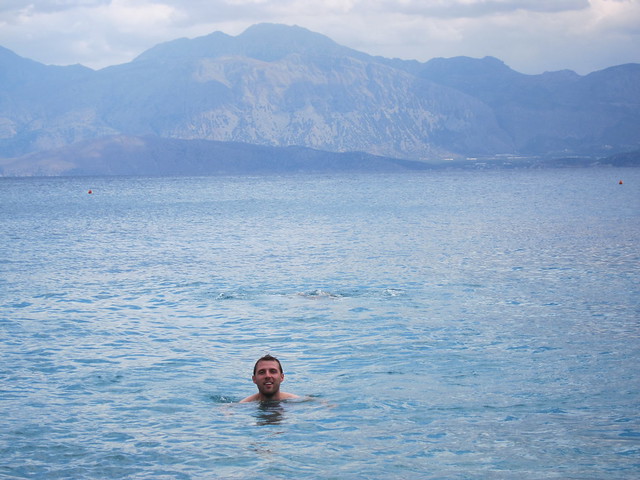
When we got too cold (it was kind of cloudy), we walked along the sea wall for a while.
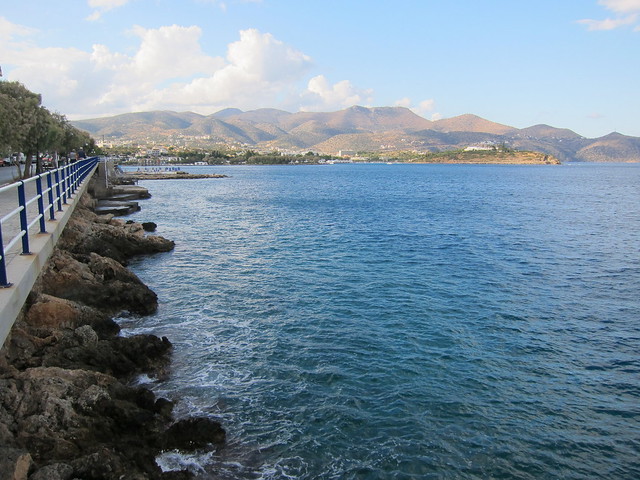
We ended the day with ice cream by the lake. What could be better? NOTHING. Nothing is better than Crete! Well, maybe Santorini, but that's an impossible call.
On to our next stop: Minoan History! Or back to the overview.
Why is nobody else swimming with you, Ty?
ReplyDeleteBecause somebody had to take the picture!
ReplyDeleteAnd because I scared away the sharks!
ReplyDeleteA cross between Venice and Rock City?! Awesome. I love all the pictures.
ReplyDeleteTyler, Tyler, you're wearing the shirt on such an epic day! I am so proud.
ReplyDeleteAlso, these pictures are making my stomach hurt. This is UNREAL.